Malayalam
Malayalam cinema refers to films made in the Indian state of Kerala in the Malayalam language. Malayalam movies typically portray social or familial issues and are considered more realistic and highbrow than Bollywood movies. In spite of the movies' relatively low budgets, Malayalam cinema has pioneered various technical, thematic and production techniques among films in India and South India. For example, the first 3-D film produced in India, My Dear Kuttichathan (1984), was made in Malayalam. The first cinemascope film produced in Malayalam was Thacholi Ambu (1978).




Many Malayalam films have been remade in other languages, including Garam Masala, Kyon Ki, Billu, Bhool Bhulaiyaa, Hera Pheri, Chup Chup Ke (in Hindi), Dindigul Sarathy, Sundara Travels, Friends, Ninaithale Inikkum, Perazhagan, Kuselan, Chandramukhi (in Tamil), Classmates, Chandralekha (in Telugu), Aaptamitra, and Bellary Naga (in Kannada).
History of Malayalam cinema
Early era
The history of Malayalam cinema has been explored in articles written by Chelangatt Gopalakrishnan. Until the release of the book The History of Cinema, it was believed that Balan had been the first Malayalam film. But in his book, Chelangatt Gopalakrishnan established that J. C. Daniel was the father of Malayalam cinema and that his film Vigathakumaran was the first Malayalam film.
The first cinema hall in Kerala, with a manually operated film projector, was opened in Trichur by K. W. Joseph in 1907. In 1913, the first electrically operated film projector was established (in Trichur again) by Jose Kattukkaran and was called the "Jose Electrical Bioscope". Soon such cinema halls were established in other major cities of Kerala. In the early days, Tamil, Hindi and English films were exhibited in these theatres.
The first Malayalam film, a silent film titled Vigathakumaran, was released in 1928. It was produced and directed by J. C. Daniel, a businessman with no prior film experience. The second film, Marthanda Varma, based on a novel by C. V. Raman Pillai, was produced in 1933. However, its release was limited due to legal disputes surrounding the use of Pillai's material.
Balan, released in 1938, was the first "talkie" in Malayalam. It was directed by S. Nottani with the screenplay and songs by Muthukulam Raghavan Pillai. It was produced at Chennai (then Madras) in the neighbouring state of Tamil Nadu. Malayalam films continued to be made mainly by Tamil producers till 1947, when the first major film studio, Udaya, was established in Kerala.
Malayalam cinema has always taken its themes from relevant social issues and has been interwoven with material from literature, drama, and politics since its inception. One such film, Jeevithanauka (1951), was a musical drama which spoke about the problems in a joint family. This movie became very popular and is probably the first "super hit" of Malayalam cinema. However, this movie's success was bittersweet. Although its success accelerated Malayalam movie-making, films that were produced after Jeevithanouka closely mimicked its structure hoping to find some sort of "success formula", thus hampering creativity for a long time. Nevertheless, this time was hailed as "the period of giants" in Malayalam film industry, due to the work of film stars Sathyan and Prem Nazir.






In 1954, the film Neelakkuyil captured national interest by winning the President's silver medal. Scripted by the well-known Malayalam novelist, Uroob, and directed by P. Bhaskaran and Ramu Kariat, it is often considered as the first authentic Malayali film. Another notable production was Newspaper Boy (1955) which contained elements of Italian neorealism. This film is notable as the product of a group of amateur college filmmakers. It told the story of a printing press employee and his family being stricken with extreme poverty.
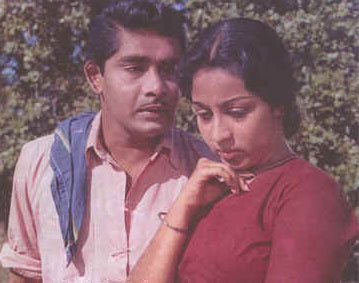
1960s
Ramu Karyat, one of the directors of Neelakkuyil(the other was P Bhaskaran) went on to become a celebrated director in the 1960s and 1970s. P. Bhaskaran also directed a few acclaimed films in the 1960s. The cameraman of Neelakkuyil, A. Vincent also became a noted director of the 1960s and 1970s. Notable films of this decade include Odayil Ninnu, Bhargavi Nilayam (1964), Chemmeen (1965), Murappennu (1965) and Iruttinte Atmavu (1966). The era of colour films came to Malayalam cinema with its first colour film Kandam Bacha Coat (1961). Chemmeen (1965), directed by Ramu Kariat and based on a story by Thakazhi Sivasankara Pillai, went on to become immensely popular, and became the first Malayalam film to win the National Film Award for Best Film.

Malayalam Parallel films of the 1970s
The 70s saw the emergence of a new wave of cinema in Malayalam. The growth of film society movement in Kerala introduced the works of the French and Italian New Wave directors to the discerning Malayali film enthusiasts. Adoor Gopalakrishnan's first film Swayamvaram (1972) brought Malayalam cinema to the international film arena. In 1973 M. T. Vasudevan Nair who was by then recognized as an important author in Malayalam, directed his first film Nirmalyam, which won the President's Gold Medal for the best film. G. Aravindan followed Adoor's lead with his Uttarayanam in 1974. K. P. Kumaran's 'Adhithi' (1974) was another film which was acclaimed by the critics. John Abraham, K. R. Mohanan, K. G. George, and G. S. Panikkar were products of the Pune Film Institute who made significant contributions.
During the late 1970s, some young artists started seeing Malayalam cinema as a medium of expression and thought of it as a tool to revitalize society. A noted director, Aravindan was famous in Kerala as a cartoonist before he started making films. His important movies include Kanchana Seeta (1977), Thampu (1978), Kummatty (1979), Chidambaram (1985), Oridathu (1986), and Vasthuhara (1990).
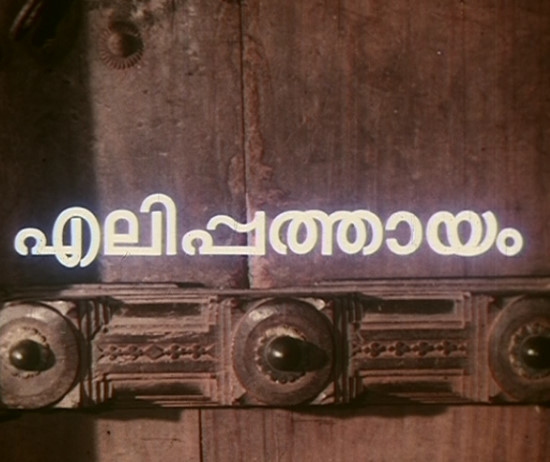
Malayalam art cinema of the early 1980s
Adoor Gopalakrishnan made Elipathayam in 1981. This movie was widely acclaimed and won the British Film Institute award. His other movies include Mukhamukham (1984), Anantharam (1987) Mathilukal (1989), Vidheyan (1994), Kathapurushan (1995), and Nizhalkkuthu (2003), I.V. Sasi the path breaker who has directed more than 131 odd films over a span of 34 years made "Kanamarayathu" (1984), Padmarajan made his early works in this period including the movie Koodevide? (1983)
P. A. Backer and Bharathan are other names worth mentioning.'Golden Age' of Malayalam cinema




'Golden Age' of Malayalam cinema
Most critics and audiences consider this period as the golden age of Malayalam cinema. The Malayalam cinema of this period was characterised by detailed screenplays dealing with everyday life with a lucid narration of plot intermingling with humour and melancholy. This was aided by brilliant cinematography and lighting as in motion pictures like Perumthachan (1990), directed by Ajayan with Santosh Sivan as the cinematographer. These films are also remembered for their warm background music by composers like Johnson, as in the motion picture Namukku parkkan munthiri thoppukal (1986) by Padmarajan.
Many of the movies released during this time narrowed the gap between art cinema and commercial cinema in the Malayalam film industry, as in Mrigaya (1989, directed by I.V. Sasi and written by Lohithadas), Oru Vadakkan Veeragatha (1989), Kireedam (1989, directed by Sibi Malayil, starring Mohanlal and written by Lohithadas), Mathilukal (1989, directed by Adoor Gopalakrishnan), Amaram (1991, directed by Bharathan), Kaakothikaavile Appoopan Thadikal (1988, directed by Kamal) and Sargam (1992, directed by Hariharan).
The period had an abundance of movies rich in creative humour from directors like Priyadarshan, Sathyan Anthikkad and Kamal. The era also saw well-crafted comedy by the Duo Siddique-Lal, Ramji Rao Speaking (1989) and In Harihar Nagar (1990). The internationally acclaimed Piravi (1989) by Shaji N. Karun was the first Malayalam film to win the Caméra d'Or-Mention at the Cannes Film Festival. Other notable contributions of this period include His Highness Abdullah (1990) directed by Sibi Malayil, Abhayam (1991) directed by Sivan, and the motion picture Daisy (1988) an expressive depiction of separation and longing set in a boarding school, directed by Prathap K Pothan.
Malayalam cinema through the early-mid 1990s
Some examples are Mathilukal (1990), Vidheyan (1993) by director Adoor Gopalakrishnan, Devasuram (1993) directed by I.V. Sasi, Bharatham (1991) by Sibi Malayil, Ulladakkam (1991) directed by Kamal, Manichitrathazhu (1993) by Fazil, Ponthan Mada (1993) by T. V. Chandran, and Desadanam (1997) by Jayaraaj. Swaham (1994), directed by Shaji N.Karun, was the second Malayalam film entry in the Cannes International Film Festival, where it was a nominee for the Palme d'Or. Murali Nair's Marana Simhasanam later won the Caméra d'Or at the 1999 Cannes Film Festival.
Malayalam cinema through the early-mid 2000s
The Malayalam film industry in recent times has been affected by the spread of satellite digital television and film piracy. Slapstick comedy is the predominant theme in the films of this era. C.I.D. Moosa (2003) by Johny Antony , Meesamadhavan (2002) by Lal Jose and Kunjikkoonan directed by Sasi Shankar (2002) are examples. Sequels to a number of successful films have been made. These include Ravanaprabhu (Devasuram) and the sequels made to the 80s hit movie Oru CBI Diarykurippu, named Sethurama Iyer CBI (2004) and "Nerariyan CBI" (2005), which were well received. Many movies during the early 2000s were of low quality. Adding to this crisis, a parallel culture of adult-content movies named "Shakeela films" emerged to be the best grossers for more than a year. Malayalam cinema saw a rare dearth of talent. At the same time, Tamil movies saw a surge of new talent in scriptwriters, directors and actors. This resulted in increased popularity of Tamil and Hindi movies in Kerala. Several film theatres were closed in rural Kerala and were converted to marriage halls. But by the last of year 2003, it was a happy season for the industry.
Malayalam cinema through the late 2000s
Malayalam movies saw a comeback in 2005. New directors such as Lal Jose, Roshan Andrews, Blessy and Anwar Rasheed brought back original scripts to Malayalam movies. Notable movies of this era are Udayananu Tharam, Note Book, Classmates, Kazhcha, Keerthi Chakra, Vinoda Yatra, Rajamanikyam, Arabi Kadha, and Kadha Paryumbol. About half of Malayalam movies are remade into other languages. This era has seen new promising actors like Dileep, Kunchako Boban, Prithviraj, Narain, Jayasurya, and Indrajith, along with stalwarts Mammooty and Mohanlal.
Pioneered film-making techniques
Malayalam films cater to people living in the South Indian state of Kerala and emigrants from it. The total population of Malayalees, as they are called, is around 40 million, out of which about 60% can be estimated as filmgoing. [citation needed] Most Malayalam films are made with a budget ranging from Rs 1 crore to 10 crores (approximately US$0.2 million to 1 million).[citation needed] Since 2007, Malayalam cinema has seen an increasing number of big-budget movies like Big B, Sagar alias Jacky, Red Chillies, Love in Singapore, Aakasha Gopuram, Twenty:20 and Pazhassi Raja. Pazhassiraja is the highest budget Malayalam film, made at a budget of Rs 35 crore (approximately US$6.5 million).
Malayalam cinema has pioneered various technical, thematic and production techniques among films in India and South India. Such films include:
Marthanda Varma (1933): The first Indian historical drama film. The film was based on the life of Marthanda Varma, the Maharajah of the Indian princely state of Travancore in the mid 1700s. Marthanda Varma was film adaptation of a novel in the same name by C. V. Raman Pillai, making it one of the first Indian film adaptations from literature other than the puranas.
Newspaper Boy (1955): India's first neorealistic film. The film drew its inspiration from Italian neorealism and was released a few months before Satyajit Ray's debut film Pather Panchali, another neo-realistic film.
Thacholi Ambu (1978): South India's first CinemaScope film.
Padayottam (1982): India's first indigenously produced 70 mm film.
My Dear Kuttichathan (1984): India's first 3-D film.
Amma Ariyan (1986): The first film made in India with money collected from the public. The film was produced by Odessa Collective, founded by the director of the film John Abraham and friends. The fund was raised by collecting donations and screening Charlie Chaplin's film The Kid.
O'Faby (1993): India's first live-action/animation hybrid film.
Notable personalities
Directors

Malayalam cinema boasts many brilliant film directors, starting with J. C. Daniel, the director and producer of the first Malayalam film, Vigathakumaran (1928). Unlike other Indian films at that time, most of which were films based on the puranas, he chose to base his film on a social theme. Though the film failed commercially, he paved way for the Malayalam film industry and is widely considered the father of Malayalam cinema. Till the 1950s, Malayalam film didn't see many talented film directors. The milestone film Neelakkuyil (1954), directed by Ramu Karyat and P. Bhaskaran, shed a lot of limelight over its directors. Ramu Karyat went on to become a celebrated director in the 1960s and 1970s. P. Bhaskaran also directed a few acclaimed films in the 1960s. The cameraman of Neelakkuyil, A. Vincent, also became a noted director of the 1960s and 1970s. Another noted director of the 1950s was P. Ramadas, the director of the neorealistic film Newspaper Boy (1955).

Malayalam cinema boasts many brilliant film directors, starting with J. C. Daniel, the director and producer of the first Malayalam film, Vigathakumaran (1928). Unlike other Indian films at that time, most of which were films based on the puranas, he chose to base his film on a social theme. Though the film failed commercially, he paved way for the Malayalam film industry and is widely considered the father of Malayalam cinema. Till the 1950s, Malayalam film didn't see many talented film directors. The milestone film Neelakkuyil (1954), directed by Ramu Karyat and P. Bhaskaran, shed a lot of limelight over its directors. Ramu Karyat went on to become a celebrated director in the 1960s and 1970s. P. Bhaskaran also directed a few acclaimed films in the 1960s. The cameraman of Neelakkuyil, A. Vincent, also became a noted director of the 1960s and 1970s. Another noted director of the 1950s was P. Ramadas, the director of the neorealistic film Newspaper Boy (1955).
In the 1970s, the Malayalam film industry saw the rise of film societies. It triggered a new genre of films known as "parallel cinema". The main driving forces of the movement, who gave priority to serious cinema, were Adoor Gopalakrishnan and G. Aravindan. People like John Abraham and P. A. Becker gave a new dimension to Malayalam cinema through their political themes. The later 1970s witnessed the emergence of another stream of Malayalam films, known as "middle-stream cinema", which seamlessly integrated the seriousness of the parallel cinema and the popularity of the mainstream cinema. Most of the films belonging to this stream were directed by I. V. Sasi, K. G. George, Bharathan and Padmarajan.
In the late 1980s and early 1990s, a period widely regarded as the Golden Age of Malayalam cinema, a new array of directors joined the stalwarts who had already made a mark in the industry. The Golden Age saw the narrowing of the gap between the different streams of the industry. Directors like I. V. Sasi, Fazil, Joshy, Kamal, Sibi Malayil, Hariharan, Priyadarshan, Sathyan Anthikkad, K. Madhu and Siddique-Lal contributed heavily in the Golden Age. Then there were maverick filmmakers like John Abraham, Balachandra Menon and Sreenivasan who contributed their part as well.
The 2000s witnessed the decline of quality of Malayalam films. Many directors who excelled in the Golden Age struggled as many of their films continuously failed critically and commercially. As a result the gap between parallel cinema (now known as art cinema) and mainstream cinema (now known as commercial cinema) widened. The 2000s also saw a commercial film formula being created in line with Tamil and Bollywood films. Directors like Shaji Kailas, Rafi Mecartin and Anwar Rasheed directed blockbusters which had few artistic merits to boast of. Despite the overall decline, some directors stood apart and made quality cinema. Shaji N. Karun, T. V. Chandran, Lenin Rajendran, T. K. Rajeev Kumar, Shyama Prasad and Jayaraj made films that won laurels. Notable directors who debuted in this time include Blessy, Lal Jose, R. Sharath and Roshan Andrews.
Malayalam film directors have made their mark in the national level as well. Out of the 40 National Film Awards for Best Director given away till 2007, Malayalam directors have pocketed 12, trailed only by Bengali (14 awards). The directors who have won the prestigious award are Adoor Gopalakrishnan (1973, 1985, 1988, 1990, 2007), G. Aravindan (1978, 1979, 1987), Shaji N. Karun (1989), T.V. Chandran (1994), Jayaraj (1998) and Rajivnath (1999). There are several recipients of the Special Jury Award as well: Mankada Ravi Varma (1984), John Abraham (1987), Shaji N. Karun (1995) and Pradeep Nair (2005).
Actors
Lead actors


A lead actor is called as a superstar when that person has become a driving force at the box office. Just like other Indian film industries, there are no clear-cut guidelines for decorating an actor as superstar, and this designation is almost always bestowed by the media after an actor proves to be a champion at the box office.
Thikkurissy Sukumaran Nair was the first person in the Malayalam film history to be called a superstar, following the tremendous success of his second film Jeevithanauka (1951), which is touted as the first superhit of Malayalam cinema. Later Prem Nazir, Sathyan, Madhu, Jayan, M. G. Soman, and Sukumaran came to be called superstars. Prem Nazir and Sathyan formed a bipolar industry in which a considerable number of films made in Malayalam in the later 1960s and the whole of 1970s starred one of them. Curiously, the trend was continued in the next era as well, with Mohanlal being established as a superstar in the early 1980s. Suresh Gopi, Shankar and Rahman also came to be called superstars in the later 1980s and early 1990s. However, Shankar and Rahman lost their sheen in later 1990s and they now play supporting roles. Mammootty, Mohanlal, Suresh Gopi, are considered the reigning superstars of Malayalam cinema. Recently Prithviraj has joined their ranks.






As with most of the other Indian film industries, the Malayalam film industry is driven by male actors. None of the female actors who have been part of the industry have come to be known as superstars, though there were immensely popular stars like Miss Kumari, Sharada, Sheela, Shobhana, Urvashi, Manju Warrier, Samyuktha Varma, Kavya Madhavan and Meera Jasmine.
Many actors have brought laurels to Malayalam films with their performances. As of 2007, Malayalam film actors have won 11 out of the 42 National Film Awards for Best Actor ever given away, including two occasions of double awardees. 11 is the second highest number of award wins by a film industry trailed only by Hindi (17 awards). The Malayalam film actors who have won the award are P. J. Antony (1974), Gopi (1978), Balan K. Nair (1981), Premji (1988), Mammootty (1989, 1993, 1999), Mohanlal (1991, 2000), Suresh Gopi (1998), Balachandra Menon (1998) and Murali (2002). Additionally, Malayalam film actors have won several Special Jury Awards as well: Mohanlal (1990), Kalabhavan Mani (2000), Nedumudi Venu (2004) and Thilakan (2007).
_300.jpg)
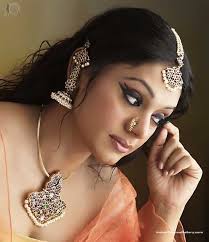

_300.jpg)


Malayalam female actors are not far behind. As of 2007, they have won the National Film Award for Best Actress 5 times. The winners are Sharada (1969, 1973, 1979), Monisha (1987), Shobana (1994, 2002), Meera Jasmine (2004) and Priyamani (2007). The actresses to win the Special Jury Award are Jomol (1998), Manju Warrier (1999) and Jyothirmayi (2003). Sharada did win another award in 1979 for the Telugu film Nimajjan; so did Shobana in 2002 for the English film Mitr, My Friend.
Supporting actors
In the early times of Malayalam cinema, supporting roles, though mostly donned by established theatre artists, did not have any noted supporting actors. In the 1960s and 1970s several supporting actors like Kottarakkara Sreedharan Nair, Adoor Bhasi, Bahadoor, Balan K. Nair, Adoor Bhavani and Aranmula Ponnamma came into the scene. Most of them went on to have lifelong careers. In the 1980s and 1990s many more joined them, notably Thilakan, Nedumudi Venu, Jagathy Sreekumar, Biju Menon, Vijayaraghavan, Innocent, Siddique, Jagadish, Kuthiravattam Pappu, Manoj K. Jayan, Rajan P. Dev, Sukumari, K.P.A.C. Lalitha and Bindu Panicker. Some of them had short careers with title roles as well.
Despite the presence of a number of talented actors, Malayalam films have only won 2 out of the 24 National Film Awards for Best Supporting Actor so far given away, as of 2007. Thilakan (1988) and Nedumudi Venu (1991) are the only actors to win the award. The same is not the case with female actors. They have won 6 out the 24 National Film Awards for Best Supporting Actress given away, trailed only by Hindi (10 awards). The winners are K.P.A.C. Lalitha (1991, 2001), Santha Devi (1992), Aranmula Ponnamma (1996), Sheela (2005) and Urvashi (2006).
Film music
Film music, which refers to playback singing in the context of Indian music, forms the most important canon of popular music in India. The film music of Kerala in particular is the most popular form of music in the state. Before Malayalam cinema and Malayalam film music developed, the Keralites eagerly followed Tamil and Hindi film songs, and that habit has stayed with them till now. The history of Malayalam film songs begins with the 1948 film Nirmala. The film's music director was P. S. Divakar, and the songs were sung by P. Leela, T. K. Govinda Rao, Vasudeva Kurup, C. K. Raghavan, Sarojini Menon and Vimala B. Varma, who is credited as the first playback singer of Malayalam cinema.

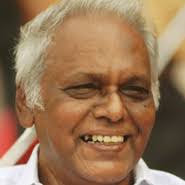



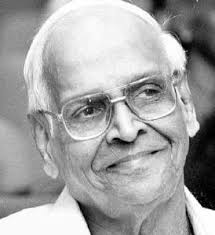



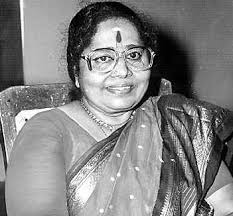
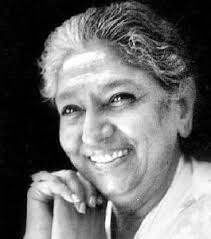











The main trend in the early years was to use the tune of hit Hindi or Tamil songs in Malayalam songs. This trend changed in the early 1950s with the arrival of a number of poets and musicians to the Malayalam music scene. People who stormed into the Malayalam film music industry in the 1950s include musicians like V. Dakshinamurthy (1950), K. Raghavan (1954), G. Devarajan (1955) and M.S. Babu Raj (1957) and lyricists like P. Bhaskaran (1950), O. N. V. Kurup (1955) and Vayalar Rama Varma (1956). They are attributed with shaping Malayalam film music stream and giving it its own identity. Major playback singers of that time were Kamukara Purushothaman, K. P. Udayabhanu, A. M. Raja, P. Leela, Santha P. Nair, P. Susheela and S. Janaki. Many of this singers like A. M. Raja, P. Susheela and Janaki were not Malayalis and their pronunciation was not perfect. Despite that, these singers got high popularity throughout Kerala. In the later years many non-Malayalis like Manna Dey, Talat Mahmood, Lata Mangeshkar, Asha Bhosle and S. P. Balasubrahmanyam sang for Malayalam films. This trend was also found among music directors to an extent, with outside musicians like Naushad, Usha Khanna, Bombay Ravi, Ilaya Raja, Vishal Bharadwaj and A. R. Rahman.[16] This can be attributed to the fact that film music in South India had a parallel growth pattern with so many instances of cross-industry contributions.
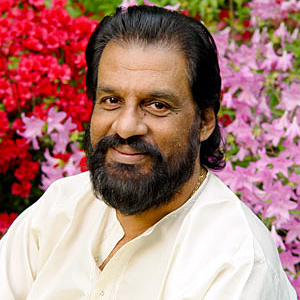
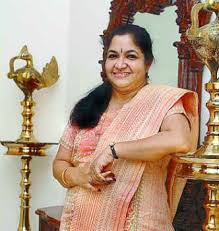


K. J. Yesudas, who debuted in 1961, virtually revolutionised the Malayalam film music industry and became the most popular Malayalam singer ever. He became equally popular with classical music audience and people who patronised film music. He along with P. Jayachandran gave a major facelift to Malayalam playback singing in the 1960s and 1970s. Malayalam film music also received heavy contributions from musicians like Johnson, M. G. Radhakrishnan, Raveendran, S. P. Venkitesh and Ouseppachan, lyricists like Sreekumaran Thampi, Yusuf Ali Kechery, and Kaithaprom Damodaran Namboodiri, and singers like M. G. Sreekumar, G. Venugopal, K. S. Chitra and Sujatha Mohan. A notable aspect in the later years was the extensive of classical carnatic music in many film songs of the later 1980s and early 1990s. Interestingly, that particular period is also considered as the peak time for Malayalam cinema itself and is quite widely known as the Golden Age of Malayalam cinema,[16] a period in which the difference between art films and popular films was least felt. Similarly, classical carnatic music was heavily used in several popular film songs, most notably those in films like Chithram (1988), His Highness Abdullah (1990), Bharatham (1991), Sargam (1992) and Sopanam (1993). Vidyasagar was the leading music composer in Malayalam films, from the late nineties to the early 2000s.
At present, the major players in the scene are young telents like musicians Rahul Raj, Deepak Dev, Alphonse, Jassie Gift and Biji Pal, lyricists Gireesh Puthanchery, Vayalar Sarath and Anil Panachooran, and singers Madhu Balakrishnan, Afsal, Manjari and Jyotsna, along with stalwarts in the field.
Young composers like Rahul Raj and Gopi Sundar are not only known for their catchy tunes, but also known for bringing in a lot of electronics, digital sound and a variety of genres in Malayalam film songs.

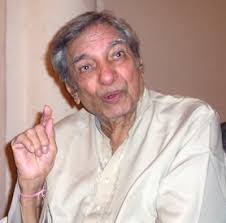
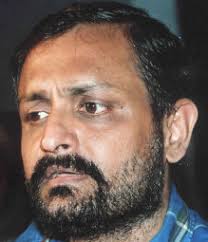



The national award winning music directors of Malayalam cinema are Johnson (1994, 1995), Bombay Ravi (1995) and Ouseppachan {2008}. The 1995 National Award that Johnson received for film score of Sukrutham (1994) was the only instance in the history of the award in which the awardee composed film soundtrack rather than songs. He shared that award with Bombay Ravi who received the award for composing songs for the same film. Additionally Ravindran have received a Special Jury Award in 1992 for composing songs for the film Bharatham. The lyricists who have won the national award are Vayalar Ramavarma (1973), O. N. V. Kurup (1989) and Yusuf Ali Kechery (2001). The male singers who got national award are K. J. Yesudas (1973, 1974, 1988, 1992, 1994), P. Jayachandran (1986) and M. G. Sreekumar (1991, 2000). Yesudas has won two more national awards for singing in Hindi (1977) and Telugu (1983) films, which makes him the person who has won the largest number of National Film Award for Best Male Playback Singer with 7 awards, closely followed by S. P. Balasubrahmanyam with six awards. The female singers who have won the award are S. Janaki (1981) and K. S. Chitra (1987, 1989). Chitra had also won the award for Tamil (1986, 1997, 2005) and Hindi (1998) film songs, which makes her the person with the largest number of National Film Award for Best Female Playback Singer wins with 6 awards, closely followed by P. Susheela with 5 awards.

No comments:
Post a Comment